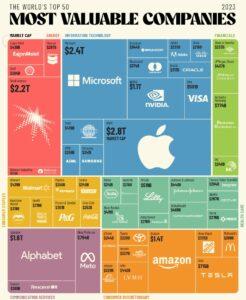Global manufacturers are facing the challenge of diminishing demand amidst a gloomy economic outlook for the industry
Recent business surveys conducted by data firm S&P Global reveal that factories in the United States and the eurozone experienced a decrease in new orders for manufactured goods in May. These factories are currently working through their backlog of orders, which had accumulated during the initial stages of the pandemic. However, it remains uncertain how long these backlogs will be able to sustain the global manufacturing industry.
In May, the manufacturing sector in the United States experienced a contraction, as indicated by data from S&P Global. Additionally, a survey conducted by the Institute for Supply Management revealed that the industry contracted for the seventh consecutive month during the same period, with the pace of contraction accelerating compared to the previous month.
According to recent data from the US government, there are indications of a potential ongoing slowdown. The Commerce Department’s report revealed that factory orders, excluding the volatile transportation category, declined for the third consecutive month in April. When excluding defense, factory orders were down in four out of the past six months leading up to April.
S&P Global figures indicate that manufacturing in the eurozone experienced a decline in production, new orders, and backlogs in May, with the sector contracting at an accelerated rate during that month. In March, industrial production in the 20-nation currency area also witnessed a significant drop, largely attributed to a sharp decline in Ireland. The industrial production indicator encompasses the output of manufacturers, miners, and utility companies.
The manufacturing industry in China, the world’s largest, experienced a temporary improvement in business conditions in May, as indicated by the Caixin manufacturing Purchasing Managers’ Index. This provided some respite for investors concerned about a potential slowdown in the world’s second-largest economy. However, recent data revealed a significant decline in China’s exports, which fell by 7.5% in May compared to the same period last year. This marks the largest decline since January. Additionally, imports also contracted further during that month.
China’s trade figures, characterized by a decline in exports, indicate a weakened demand for Chinese goods. These figures compound the economic challenges faced by the country, including rising unemployment and a significant downturn in the property sector. Furthermore, the JPMorgan Global Manufacturing PMI revealed that manufacturers’ optimism globally has reached its lowest level since December.
In an analyst note, Ariane Curtis, global economist at Capital Economics, highlighted that while there was some improvement in manufacturing activity in May, it was mainly driven by stronger growth in certain large emerging markets. However, the overall outlook for the industry remains grim, with a significant decline in new export orders, indicating a challenging situation ahead.
What Factors Are Contributing to The Prevailing Weakness?
The COVID-19 pandemic compelled consumers worldwide to reduce their expenditure on services in 2020, leading to a surge in the demand for goods. Consequently, manufacturers experienced a rapid accumulation of order backlogs.
As countries lifted pandemic-related restrictions, consumers have redirected their spending back to services. In both the United States and Europe, hospitality businesses are anticipating a highly active summer travel season. This continued shift towards spending on services, combined with tighter financial conditions resulting from central banks raising interest rates, presents challenges for goods producers, according to economists.
China’s reopening, following stringent pandemic restrictions, was anticipated to inject fresh momentum into the global economy, as projected by the International Monetary Fund. However, the country’s economic rebound has been lackluster, raising concerns about its ability to reignite global economic growth.
“The global shift from goods to services has resulted in a diminished demand for goods worldwide, as evidenced by the increasing strength of service-sector purchasing manager indexes,” stated Tom Garretson, senior portfolio strategist at RBC Wealth Management US.
“While there was much anticipation regarding China’s reopening, it is evident that the expected positive impact has not materialized as anticipated.”
The Prevalence of Credit Purchases for Durable Goods
Central banks persist in their efforts to combat inflation by raising interest rates, which helps to temper demand and eventually leads to stricter lending criteria by banks. This trend is particularly evident in the United States, where the recent collapses of three regional banks have further prompted a tightening of credit conditions. In the eurozone, credit conditions have also been impacted, especially following the compelled merger of Swiss banks Credit Suisse and UBS, resulting in even tighter lending standards.
Continuing its streak of consecutive interest rate hikes, the Federal Reserve, the influential central bank of the United States, has raised rates 10 times. Fed Chair Jerome Powell deems the current level of rates as “sufficiently restrictive.” Similarly, the European Central Bank has taken aggressive measures to raise interest rates in the eurozone, aiming to tackle inflation. The ECB has not yet indicated any intention to halt its efforts in this regard.
As durable goods, including cars and appliances, are frequently purchased on credit, the tightening of credit conditions is expected to have an impact on manufacturers. This could result in global manufacturers reducing their workforce if the demand for goods continues to decline and their backlogs diminish further.
Impact on Manufacturers and Workforce
Manufacturers are vulnerable to economic downturns, particularly during recessions when consumer spending weakens. Discretionary goods, such as non-essential purchases, are often the first to be reduced during times of financial strain. Therefore, if there are indications of broader economic weakness, it is likely to have a negative impact on manufacturers.
Despite the stable labor market in the United States, economists at the Federal Reserve have maintained their prediction of a mild recession later in the year. Recent revised data indicates that the 20-nation eurozone officially entered a recession at the beginning of the year. In the first quarter, the eurozone’s gross domestic product contracted by 0.1% compared to the previous three-month period, following a 0.1% decline in the fourth quarter. However, the broader European Union experienced a slight increase of 0.1% in economic output during the first three months of the year.
At the beginning of the year, Germany, the largest economy in Europe, faced a more pronounced decline in economic output compared to the eurozone, leading the country into a recession. The German economy contracted by 0.3% in the first quarter, following a 0.5% decline in the fourth quarter of the previous year.
Consumers and businesses in both regions faced challenges due to rising interest rates and high inflation, although there has been a recent easing in price increases.
In contrast, China’s economy showed signs of recovery, with a 2.2% expansion in the first quarter compared to the previous three months. This growth was primarily driven by the reopening of the country, as Chinese consumers resumed dining out and traveling. Furthermore, in the first three months of the year, China’s GDP grew by a solid 4.5% compared to the same period last year. The upcoming May data will be closely watched to assess China’s ongoing economic performance.
Heightened Caution Among Manufacturers
Foxconn, a prominent multinational electronics manufacturer and key supplier for Apple, anticipates stagnant revenues from its cloud and networking products in 2023, with a projected decline in the second quarter. During an earnings call last month, the company’s chair, Liu Young-way, expressed a cautious outlook for the upcoming months.
During an earnings call last month, Monish Patolawala, the Executive Vice President and Chief Financial and Transformation Officer at manufacturing giant 3M, acknowledged the substantial decline in demand for consumer electronic devices, which had a severe impact on the company’s electronics business. In April, 3M announced its intention to lay off 6,000 employees globally.
According to a recent survey by the National Association of Manufacturers, only 67% of US manufacturers expressed optimism about the future of their companies, marking the lowest share since the third quarter of 2020. The survey highlighted that retaining high-quality workers, a sluggish domestic economy, and an unfavorable business climate were the major challenges faced by manufacturers.



